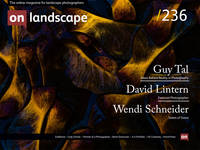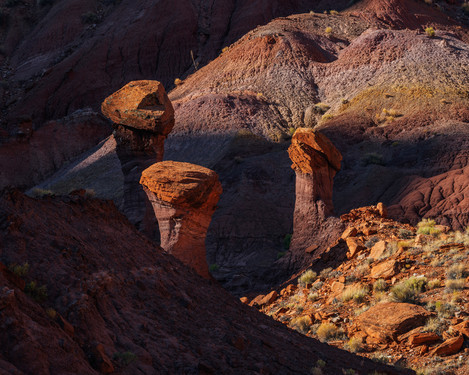Part II

Guy Tal
Professional photographic artist, author and speaker working primarily in the Western US.

Tim Parkin
Amateur Photographer who plays with big cameras and film when in between digital photographs.
Continuing our discussion about the vagaries of reality and truth in photography, Guy Tal and I start to talk a little about the way that it's easy to talk about some of these ideas in the abstract but almost impossible to define rules and criteria. Don't expect any easy answers to arise during our chat but it's only through articulating your ways of thinking that you get to understand the issues a little better. If you want to catch up with where we were, you can read part one below.
Ideas Behind Reality in Photography - Part One
Tim Parkin (TP): You know we are organising the Natural Landscape Awards Competition at the moment and we have gone through the idea, this philosophy of the heap if you will. I did the same for the Wildlife Photographer of the Year and there is no boundary, there is no line you draw, it’s contextual. It’s to do with the zeitgeist, it’s to do with how cameras work, it’s to do with what’s possibly new or what’s going to happen in the future. We don’t know at the moment, so it’s all subjective.
For instance, in terms of the Wildlife Photographer of the Year, there were certain things which were on one side of the boundary or the other. A heap isn’t a single grain of sand, 500,000 grains of sand is a heap, absolutely.
Guy Tal (GT) Is twenty a heap?
TP: To an ant, yes. To a builder, certainly not.
GT: It’s a judgement call.
TP: You can make that judgement call and then when you go to the heap experts, they just have an argument about it.
GT: Don’t get me started on experts! That’s another thing in art, people claiming to be experts in some general sense when in fact they may come from a fairly narrow philosophical foundation. Many times, if you dig a little deeper you find that those foundations are entirely subjective and arbitrary. Certainly, you might be an expert on subject A that’s founded on some philosophy, but if my philosophy is different from yours, then it pulls the rug from under your feet. The very thing your expert judgement is founded on, is not relevant to me.
It’s OK to disagree in art. In fact, it’s one of the ways art grows: people disagree and argue and find creative ways to depart from the sensibilities of their day, and suddenly you have a new movement. A hundred years later, the new movement and the old movement both seem obvious. For example, nobody today will argue that impressionism is not a valid form of artistic painting. But when impressionism came about most of the art world, including the most powerful art institutions of the time, condemned and ridiculed impressionism. Today we read these old criticisms and laugh at those critics.


